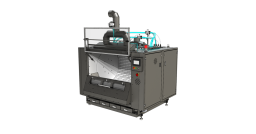Cocoa Event Huila Colombia
Posted in:
Opinion
Hi everybody, I would like to hear your opinion regarding a forthcoming cocoa event. We’ve been trying to make the arrangements since last year but we had to delay it several times due to severe drought.
It will be developed in a small town, named Garzón, in the central part of the Colombian department, Huila. We aim to asses several cocoa bean samples, from single farm origin, for their flavor profile to explore different flavors in this department and try to arrange the farmers who owns special flavor cocoa, with micro batch and small chocolate makers.
Some of you may have heard about other Colombian cacao origins such as Santander, Tumaco, Arauca or Sierra Nevada, but not Huila. Most cocoa around here is trinitario hybrids with criollo traits and some few criollos. Some farmers have clones, but the vast majority owns very old highly diverse cocoa plantations. This has been a barrier for development of Huila cocoa market since this variability poses a challenge for selling uniform cocoa beans in a significant quantity, every farm tastes very differently and even bean size varies greatly.
We would love to have some international clients and experts for this event, so I come to you for some advice.
First, the date could be somewhere between September and December of 2016 Our sensory panel is busy until September 11 and I’m aware that there are a lot of great cocoa and chocolate events on those dates so I’m open to suggestions.
About the duration, I’m thinking one day of a small public academic agenda and cocoa awards, and three to four days for the clients and experts to meet the farms and local cocoa production.
I´m open to every suggestion and I insist that it would be great to have some of you around here but keep in mind that this is a small event, focused on giving farmers a new horizon and meeting with possible clients. If you are a cocoa or chocolate expert, I would like to know your fees in a private message so we can discuss our budget.
We have support in English, French and maybe German. We would arrange transport and lodging from Neiva (Huila capital city) to Garzón. It is possible to reach Neiva in airplane (Bogotá-Neiva) but from there to Garzón there is only terrestrial transport (2 hours).
This event is organized by Fedecacao and Camara de Comercio de Neiva, and it is supported by Coocentral, Ministerio de Agricultura, Procolombia.
If you would like to contact me, please send me a PM and If you are interested in coffee, there is a lot to see around here too.
updated by @David Briceño: 03/13/16 16:22:16


